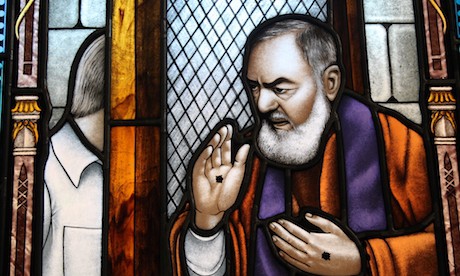If a sociologist from Mars were to come down to earth to study popular religion in Italy, the conclusion might easily be that the Christian “Holy Trinity” in il bel paese is not actually composed of the Father, the Son, and the Holy Spirit, but rather of God, the Virgin Mary, and Padre Pio.
Looking around, a staggering share of restaurants, bars, taxis, and private homes up and down the country feature images of Padre Pio, the famed Capuchin stigmatic who died in 1968 and who’s now formally “St. Pio of Pietrelcina” after his canonization in 2002 under St. John Paul II.
Almost 50 years after his death, Padre Pio’s face remains easily the most recognized and cherished visage of any Italian cleric of his time.
In 2001, a poll asked Italians what person or institution they would turn to in a moment of need. The No. 1 answer, dwarfing every other candidate, was Padre Pio with 53 percent.
So powerful is Padre Pio’s hold on the Italian imagination that many handicappers believe part of what made Cardinal Sean P. O’Malley of Boston a crowd favorite for pope three years ago, in the conclave that eventually produced Pope Francis, is that the American cardinal looks and sounds a great deal like his Capuchin confrere.
This week, Padre Pio takes center stage as part of Francis’ jubilee Holy Year of Mercy.
On Wednesday, his remains, along with those of Croatian Capuchin St. Leopold Mandić, were moved from their locations in San Giovanni Rotondo and Padova, respectively, for a week-long exposition in Rome.
They arrived at the basilica of St. Lawrence Outside the Walls, where a liturgy of welcome was led by the local superior of the Capuchin order, and then a Mass was celebrated by Cardinal Agostino Vallini, the pope’s vicar for Rome. Continue reading
Sources
- Crux, from an article by John L. Allen Jr., associate editor of Crux
- Image: The Catholic Sun
